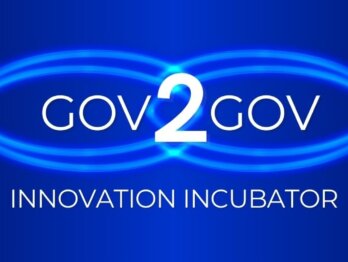Missions & Transitions: Insights from the Netherlands

Systemic challenges like climate change, sustainable agriculture, and a future-proof and digital economy require governments to go beyond traditional approaches. At RVO, the Netherlands Entreprise Agency, we’ve embraced transition management and mission portfolio management to guide our role in these dynamic transitions.
Our journey in operationalising these approaches has shown us that addressing complex societal challenges requires more than predefined frameworks or traditional approaches. By combining adaptive structures, continuous learning processes, and collaborative engagement, we are in the process of improving our capacity for accelerating transitions. While we are still evolving our approach, this blog aims to provide in insights from our journey so far, hoping to offer valuable lessons for others working on systemic change.
For practitioners in transition management and mission portfolio management, our experience reinforces that successful transition management involves balancing a clear vision with flexibility, engaging diverse stakeholders, and embedding reflection and adaptation into your processes:
- Design flexible mission frameworks: Whether working with a mission-oriented framework or transition management principles, ensure there is room for iteration and adaptation as societal challenges and needs evolve.
- Establish processes for continuous learning: Develop approaches to reflect, assess progress, and refine strategies regularly. Use tools like visioning, backcasting, and state-of-transition analysis to uncover gaps and opportunities for impact.
- Institutionalise a culture of learning and stakeholder engagement: Build mechanisms that involve stakeholders early and often, ensuring their insights guide your strategy and actions.
- Develop mechanisms for addressing cross-mission dilemmas: Acknowledge that transitions are non-linear, proactively identify and resolve conflicting goals, uncover synergies, and recognise areas where more action is needed to tackle societal challenges effectively.
Introducing RVO
The Netherlands has set mission-oriented goals to tackle climate change, advance sustainable agriculture, and foster a future-proof digital economy, aligned with frameworks such as the Paris Agreement, the Netherlands’ National Climate Agreement (2019), and national innovation strategies. At RVO, we play a key role in implementing these goals by managing a broad portfolio of policy instruments on behalf of national ministries and the European Commission.
Acting as a bridge between government, businesses, and societal stakeholders, we bring an integrated perspective to these societal challenges. However, addressing the latter is anything but straightforward, requiring innovative approaches and coordinated efforts across sectors. Traditional government approaches proved insufficient for managing such complex processes. For us, this meant embarking on a journey of ongoing adaptation, building new structures, and sometimes learning the hard way about what works; and what doesn’t.
At the core of our work we’ve placed transition management, a governance approach for steering systemic change toward sustainability through adaptive, reflexive, and collaborative processes that address interconnected societal challenges. Our goal is to contribute to the transition towards a sustainable agriculture and food system, the climate and energy transition, and the transition to a digital, future-proof economy.
Parallels between transition management and mission portfolio management
We see societal transitions as dynamic, co-evolutionary processes, requiring us to work reflexively and collaboratively with stakeholders to remain responsive to evolving challenges. This also highlight the subtle but important difference between the concepts of mission portfolio management and transition management. Mission portfolio management often begins with top-down mission-setting, defining clear, ambitious goals to guide efforts through a structured portfolio of initiatives. Transition management, on the other hand, is rooted in the goals of stakeholders within the system, incorporating both top-down policy goals and bottom-up objectives, ensuring that all goals are aligned with emergent societal needs. This approach adapts goals dynamically to reflect changing circumstances, while maintaining alignment with broader systemic objectives. However, both aim to address complex systemic societal issues through a variety of policy instruments and portfolios of initiatives and projects.
In practice, the two approaches share many similarities and benefit from exchanges and co-learning to further develop the state-of-play. At RVO, we are still navigating this change process, but through our work so far, we’ve gained valuable insights into how combining these perspectives can lead to more adaptive and impactful governance for transitions.
| Aspect | Transition Management | Mission Portfolio Management |
| Goal | Guide systemic change toward sustainability by addressing dynamic and interconnected societal challenges. | Achieve ambitious societal objectives through structured and measurable missions. |
| Philosophy | Dynamic, adaptive, and collaborative. | Goal-oriented with predefined missions. |
| Starting Point | Both bottom-up and top-down goals; focuses on emergent societal needs. | Often top-down mission-setting with clear objectives. |
| Flexibility | Continuously adjusts to evolving challenges. | Allows for iteration but within a mission framework. |
| Stakeholder Role | Inclusive, co-creation with diverse stakeholders. | Structured involvement tied to mission goals. |
| Focus | Systemic change through experimentation and learning. | Achieving measurable, time-bound mission outcomes. |
Design flexible mission frameworks
To address the complexity of societal transitions, we reorganised our structure to enable more adaptive and effective governance. As of January 1, 2025, we established the Head Directorate of Transitions, introducing a new structure to lead our efforts. This directorate oversees three transition domains: the climate and energy transition, the transition to a sustainable agriculture and food system, and the transition to a digital, future-proof economy. Each domain is led by a transition director, supported by societal challenge managers and multidisciplinary teams tasked with tackling specific challenges. The purpose of these teams is to bring together expertise in areas like transition strategy, data analysis, and monitoring to ensure a holistic approach to systemic change.
Complementing this structure are societal challenge communities, which connect staff working on the diverse policy programmes the agency executes for various ministries. These communities enable us to manage our portfolio based on the impact these programmes have on societal challenges, fostering alignment and uncovering synergies between efforts that might otherwise remain siloed. By aligning expertise and resources internally, this structure allows us to engage more strategically with external stakeholders, ensuring that collaboration across levels of government, businesses, and societal actors is better coordinated, targeted, and impactful.

Establish processes for continuous learning
Navigating societal transitions requires more than structural changes – it demands the ability to reflect, adapt, and learn continuously. At RVO, we are institutionalising processes that allow us to assess our progress, refine our strategies, and respond to evolving challenges. Central to this is the Societal Challenge Cycle (see Figure 3), an annual planning process informed by transition science. This cycle integrates tools such as visioning, backcasting, and state-of-transition analysis, helping us evaluate where we can have the most impact. The cycle is grounded in an innovative Theory of Change for Transitions methodology, which I developed to better understand transition dynamics and assess our contribution to systemic change.
These processes encourage us to uncover synergies, address gaps, and tackle tensions in our portfolio. For example, when conflicting objectives between policy programmes arise, these tools guide us in balancing competing priorities while staying focused on systemic change. By embedding continuous learning into our operations, we ensure that our efforts remain aligned with societal needs, enabling us to adapt and innovate as challenges evolve.

Institutionalise stakeholder collaboration
Addressing societal transitions requires collaboration with a diverse range of external stakeholders. At RVO, we actively engage policymakers, businesses, local governments, NGOs, and knowledge institutions to co-create solutions that reflect the realities on the ground. For example, in the energy transition, working with local governments and energy providers has helped us design programs that accelerate renewable energy adoption while addressing challenges like grid capacity and community acceptance. These partnerships ensure that our policies and initiatives are both effective and practical to implement.
This collaboration accelerates transitions by enabling us to identify and address barriers early, align efforts across sectors, and leverage the expertise and resources of our partners. Stakeholder input helps us uncover synergies between policy programs, spot potential gaps, and ensure that our actions are better targeted toward systemic change. While we are still learning how to strengthen these relationships, I believe embedding stakeholder engagement into our processes is key for driving progress on complex societal challenges.
Develop mechanisms for addressing cross-mission dilemmas
Societal transitions are rarely straightforward. At RVO, we frequently encounter transition dilemmas – situations where policy objectives conflict, requiring us to balance competing goals. For instance, we were tasked with promoting sustainable greenhouse development to boost food production while simultaneously managing water conservation in a drought-prone region in Northern Africa. This posed a significant challenge: should we prioritise agricultural efficiency and economic growth, or focus on the long-term sustainability of the water system?
Another example involves our efforts to support sustainable entrepreneurs. While we aim to help them scale their solutions, we sometimes face tension between promoting sustainability and navigating market realities. For instance, entrepreneurs providing eco-friendly insulation materials may struggle to compete with conventional, lower-cost products. These dilemmas force us to reflect on whether our programmes effectively address such barriers and truly empower sustainable businesses to thrive in competitive markets.
To address these challenges, we’ve developed structured mechanisms that empower our staff to signal dilemmas as they arise. Our goal is for societal challenge managers and transition directors to engage with relevant ministries and stakeholders to collaboratively resolve these issues. With support from transition experts and tools such as the X-Curve and the Small Wins Framework, we critically assess potential pathways and ensure that conflicting goals are addressed while maximising societal impact. I believe that systematically addressing these dilemmas not only strengthens our ability to respond but also serves as a foundation for effectively accelerating transitions.

Conclusion
RVO’s experience in operationalising transition management highlights the need for flexible governance structures, adaptive processes, and collaborative approaches to address complex societal challenges. By establishing the Head Directorate of Transitions, embedding the Theory of Change for Transitions and the Societal Challenge Cycle, and institutionalising stakeholder collaboration, we have developed tools to improve coordination and impact.
Key lessons emphasise balancing clear objectives with flexibility, fostering a culture of learning, and proactively addressing conflicting goals and priorities. By aligning expertise, leveraging stakeholder insights, and refining mechanisms to navigate dilemmas, we continue to strengthen our capacity to accelerate transitions.
We hope these reflections offer practical insights for practitioners navigating similar challenges and inspire further collaboration to drive systemic change and sustainable development.
This guest blog by Daan Sillen, Coordinator Transition Management at RVO (Netherlands Entreprise Agency), describes the Agency’s evolving approach to transition management and its parallels to mission portfolio management. This piece follows a presentation to the OECD Mission Community of Practice – an international community of 350+ mission practitioners – during a session on the topic of mission portfolio management.












